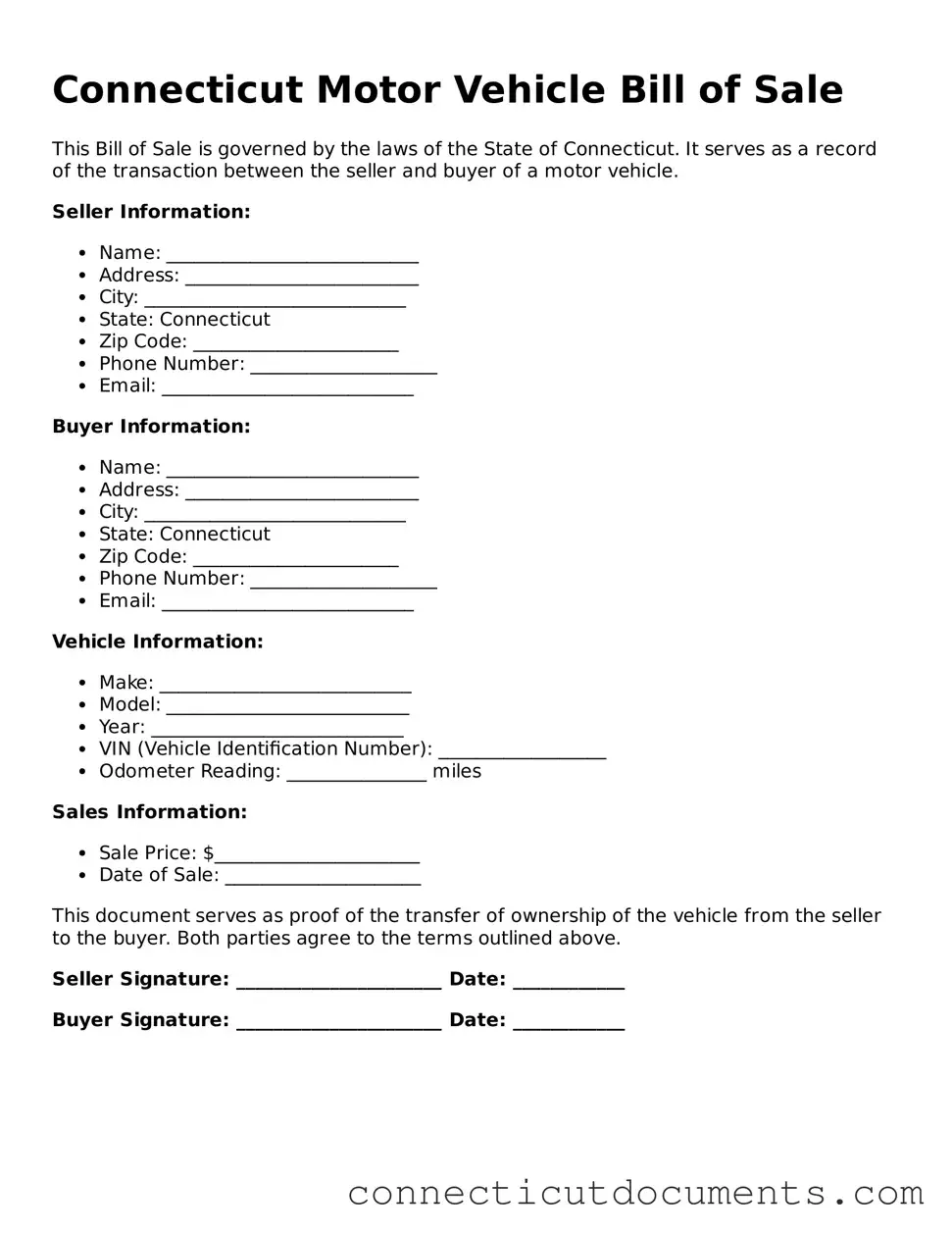What is a Connecticut Motor Vehicle Bill of Sale?
A Connecticut Motor Vehicle Bill of Sale is a legal document that records the sale of a vehicle between a buyer and a seller. This form serves as proof of the transaction and outlines the details of the sale, including the vehicle's description, purchase price, and the names of both parties involved. It is an essential document for registering the vehicle under the new owner's name.
Is a Bill of Sale required in Connecticut?
While a Bill of Sale is not legally required for every vehicle sale in Connecticut, it is highly recommended. This document provides essential proof of ownership transfer and can be useful for tax purposes, insurance, and future resale. If the vehicle is not registered, a Bill of Sale may be necessary to obtain a new title.
What information should be included in the Bill of Sale?
The Bill of Sale should include the following information: the names and addresses of both the buyer and seller, the vehicle identification number (VIN), make, model, year, and odometer reading at the time of sale. Additionally, the purchase price and the date of the transaction should be clearly stated. Both parties should sign the document to make it valid.
Can I create my own Bill of Sale?
Yes, you can create your own Bill of Sale as long as it includes all necessary information. However, using a standard form can help ensure that you do not miss any important details. There are many templates available online that comply with Connecticut's requirements. Make sure to review the form carefully before use.
Do I need to notarize the Bill of Sale?
Notarization is not required for a Bill of Sale in Connecticut. However, having the document notarized can add an extra layer of security and authenticity to the transaction. It may also help prevent disputes in the future. Both parties can choose to have the document notarized if they feel it is necessary.
What should I do with the Bill of Sale after the sale?
After the sale is complete, both the buyer and seller should keep a copy of the Bill of Sale for their records. The buyer will need this document when registering the vehicle with the Connecticut Department of Motor Vehicles (DMV). It is also advisable for the seller to retain a copy in case any issues arise later regarding the sale.
Where can I find a Connecticut Motor Vehicle Bill of Sale form?
You can find a Connecticut Motor Vehicle Bill of Sale form on the Connecticut DMV website or through various legal form websites. Many local auto dealerships may also provide a Bill of Sale template. Ensure that the form you choose complies with Connecticut laws to avoid any issues during the registration process.
